Buttery Whole Roasted Onions with Shredded Parmesan
We may earn a commission from recommended products, at no extra cost to you. See Disclosure.
INGREDIENTS
- 12 small yellow onions
- 12 whole garlic cloves, peeled
- 2 ounces/50 grams cold butter, cut into 12 narrow and long rectangles
Brush:
- ⅓ cup olive oil
- 1 teaspoon sweet paprika
- ½ teaspoon coarse salt
Toppings:
- 5 tablespoons bread crumbs
- 2 cups shredded parmesan
- 1 teaspoon garlic powder
- 1 teaspoon dried/fresh thyme
INSTRUCTIONS
- Preheat the oven to 375 F (190 C). Cut the edges of each onion. Using a sharp knife, make slits along and across the onions, but don’t go all the way, just enough to create a sort of opening in the center.
- Place the onions in a 12-cup muffin pan. Insert a piece of butter and a garlic clove into the center of each onion.
- Mix all the brush ingredients in a bowl and brush the onions generously. Cover the pan with parchment paper and tin foil and bake for 45 minutes.
- Combine all the topping ingredients in a bowl. Remove the onions from the oven and sprinkle the mixture generously on each onion. Return to the oven and transfer to grill mode for 12-15 minutes until golden.
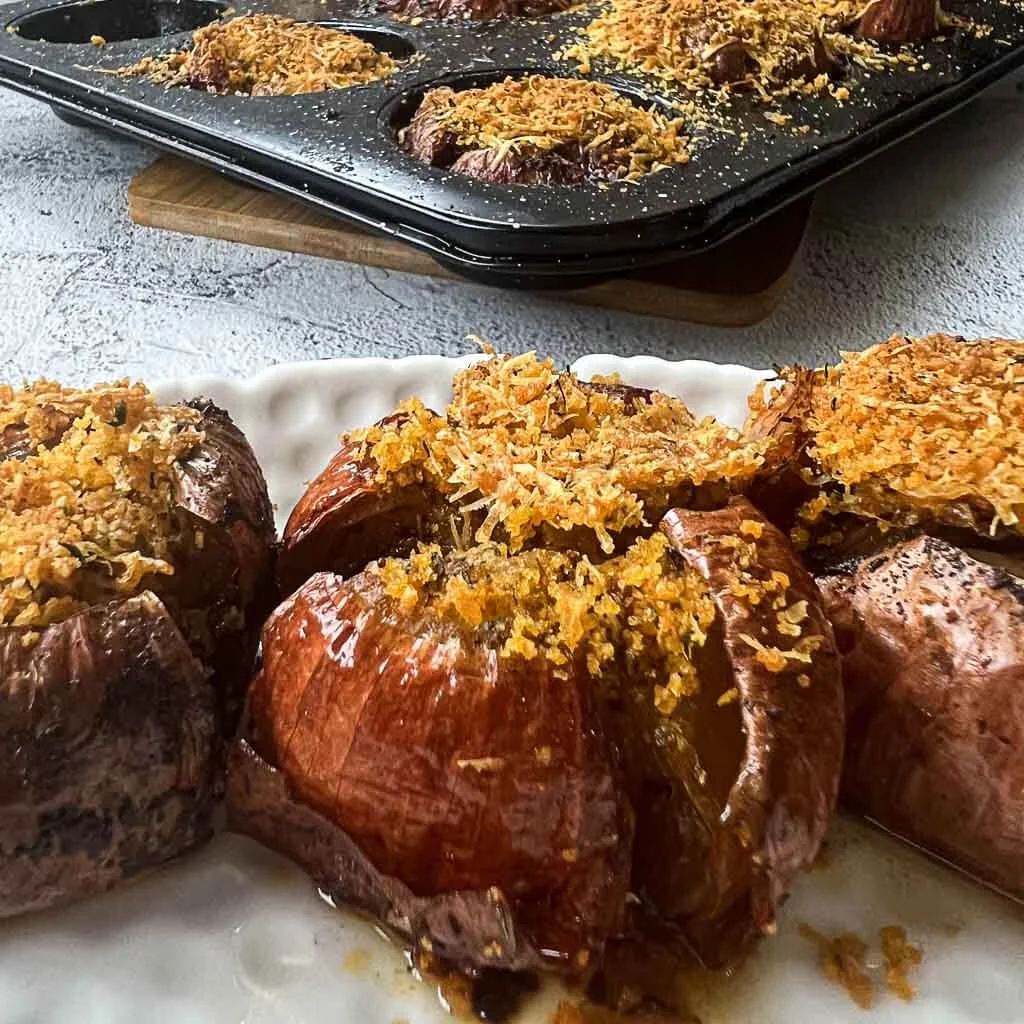
FAQ
What are the best onions for roasting?
Yellow onions are often considered best for roasting due to their flavor profile and texture. Here are a few reasons why:
Flavor: They have a robust and slightly sweet flavor that intensifies when roasted. The natural sugars in the onions caramelize during the roasting process, adding depth and richness to the final dish.
Caramelization: They have a higher sugar content compared to other onion varieties, which makes them ideal for caramelizing. Roasting brings out the natural sweetness of the onions, resulting in a flavorful and slightly sweet taste.
Texture: They have a firm texture that holds up well during the roasting process. They become tender and develop a delightful golden-brown color, providing a pleasant contrast of softness and slight crispiness.
Versatility: They are versatile and widely available, making them a popular choice for various cooking methods, including roasting. They work well as a base ingredient for many dishes, and their flavor profile complements a wide range of ingredients and seasonings.
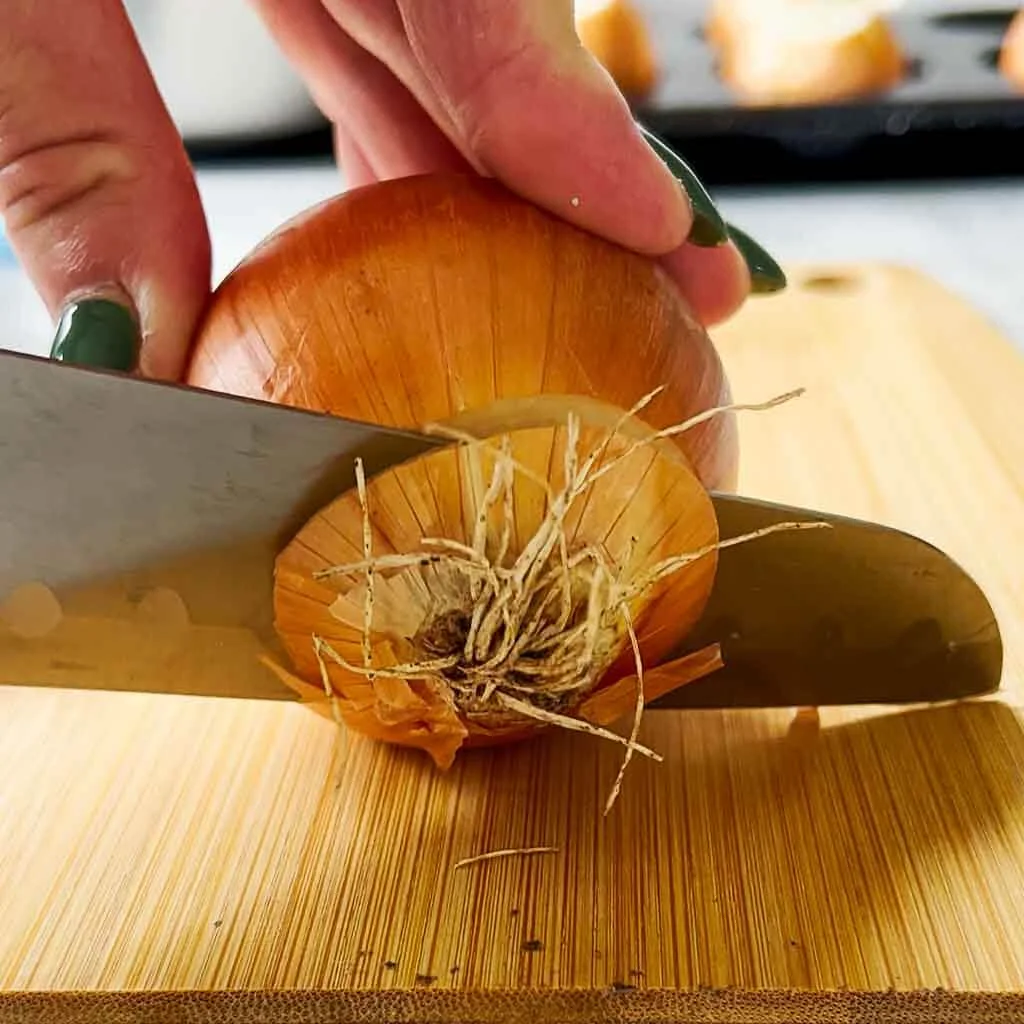
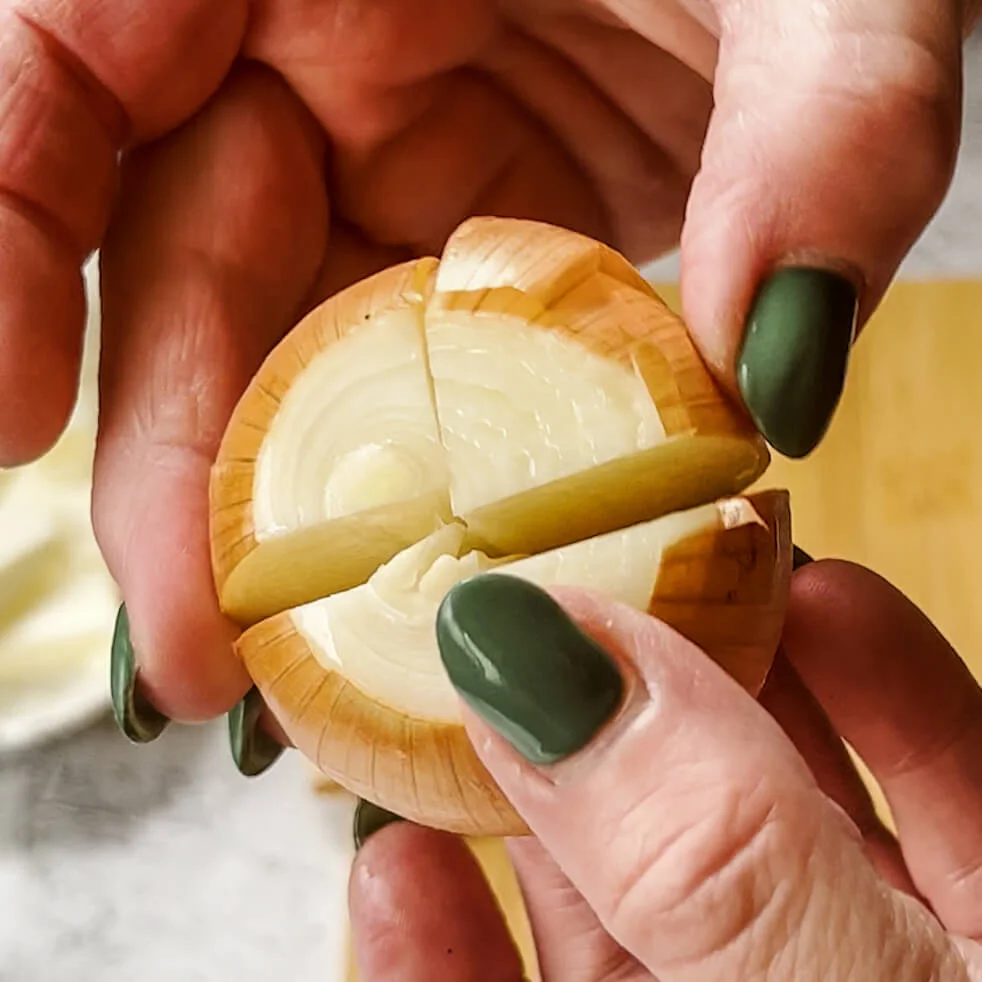
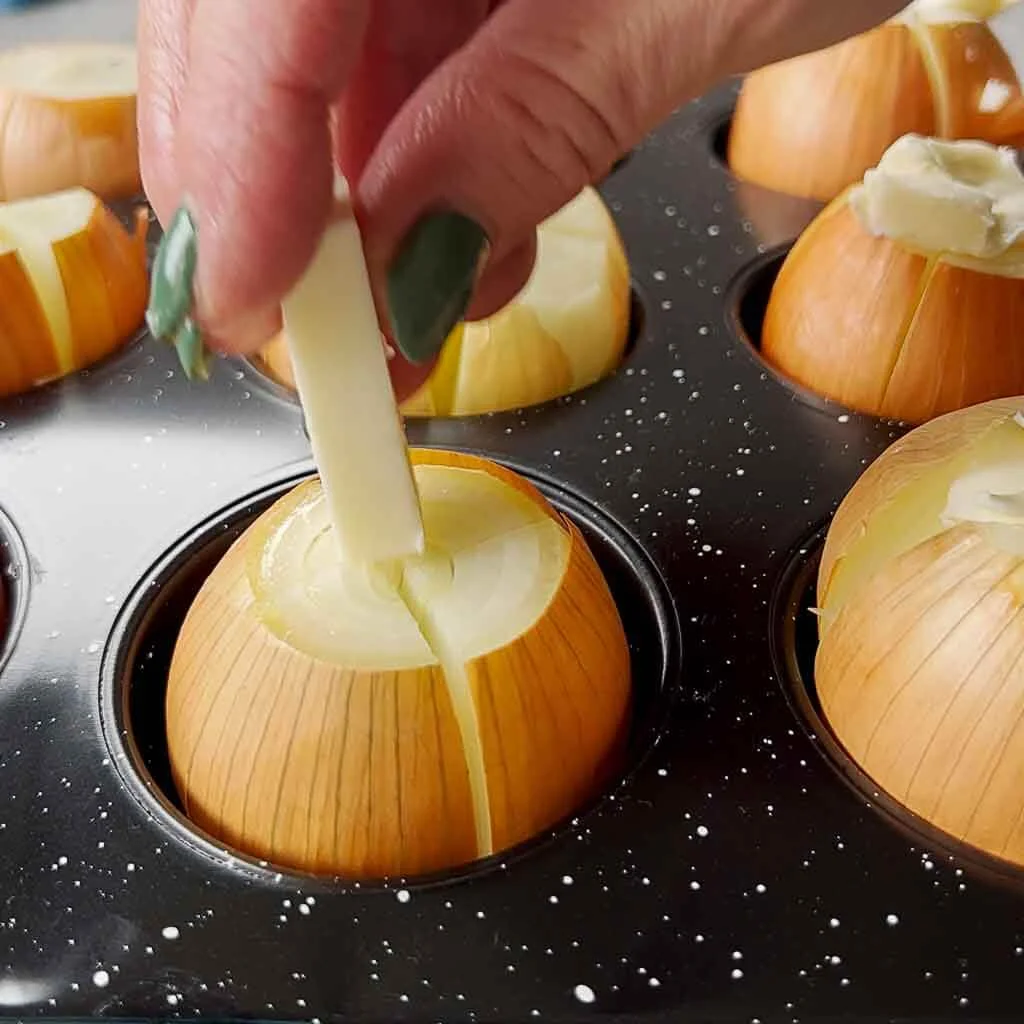
Can I use different types of onions for roasting?
While yellow onions are often preferred for roasting, it’s worth noting that other onion varieties, such as red onions or sweet onions, can also be roasted with delicious results. Each variety may bring its own unique flavor profile and characteristics to the roasted onions, allowing for experimentation and personal preference in flavor.
What to serve with roasted onions?
They can be served alongside roasted meats, incorporated into vegetable medleys, or used as a topping for pizzas, sandwiches, or salads. The roasted onions transform into a sweet and savory treat, making them a versatile addition to your culinary repertoire.

How do I store leftover roasted onions?
1. Allow them to cool completely before storing them. This helps prevent condensation and moisture buildup, which can lead to spoilage.
2. Transfer the roasted onions to an airtight container or a resealable plastic bag without any additional oil or liquid and refrigerate. The onions can retain their flavor and texture better this way. Roasted onions can typically be kept in there for up to 4 days. However, it’s always best to rely on your senses and discard them if you notice any signs of spoilage, such as an off smell, sliminess, or mold growth.
3. If you have a large amount of roasted onions, consider dividing them into smaller portions before storing. This allows you to easily take out the desired quantity when needed without exposing the entire batch to air and moisture.
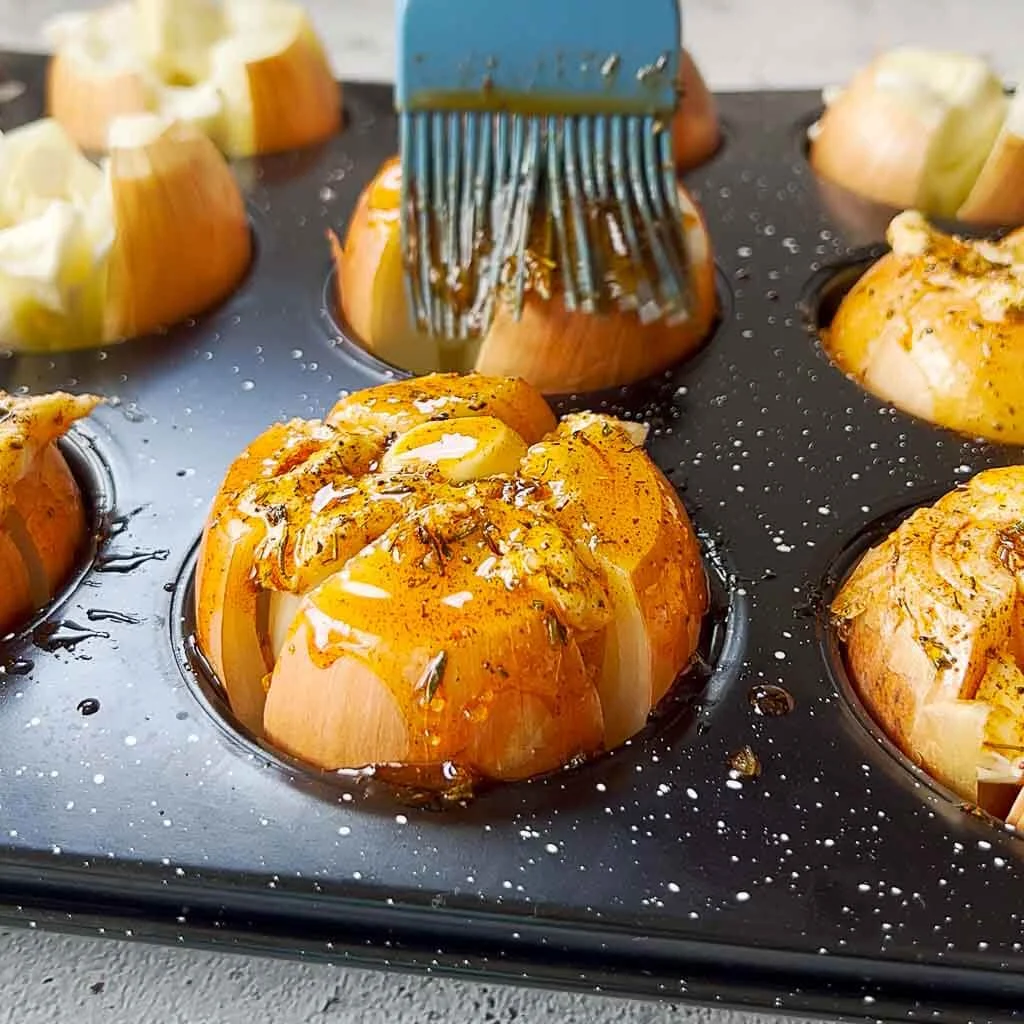
How do I know when the onions are done roasting?
1. Allow them to cool completely before storing them. This helps prevent condensation and moisture buildup, which can lead to spoilage.
2. Transfer the roasted onions to an airtight container or a resealable plastic bag without any additional oil or liquid and refrigerate. The onions can retain their flavor and texture better this way. Roasted onions can typically be kept in there for up to 4 days. However, it’s always best to rely on your senses and discard them if you notice any signs of spoilage, such as an off smell, sliminess, or mold growth.
3. If you have a large amount of roasted onions, consider dividing them into smaller portions before storing. This allows you to easily take out the desired quantity when needed without exposing the entire batch to air and moisture.
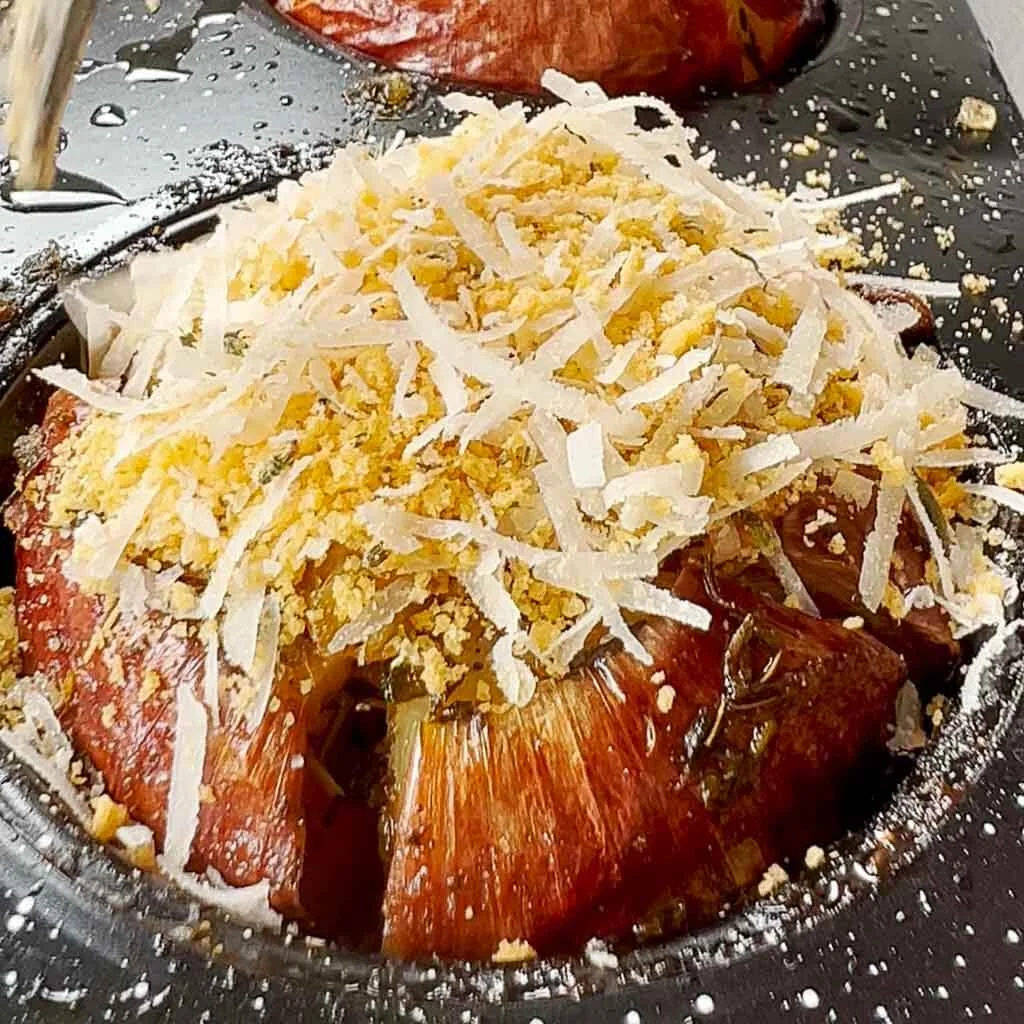
Can I use the onions in soups or stews?
Absolutely! They can add depth and sweetness to soups and stews. These onions bring a rich, caramelized flavor that enhances the overall taste of the dish. Here’s how you can use the onions in soups or stews:
Add them to the base: Once the onions have cooled slightly, chop or dice them and add them to the soup or stew base. They can be a great addition to a mirepoix (a mixture of onions, carrots, and celery) or any other aromatic vegetable base.
Flavor enhancement: the onions can elevate the flavor profile of your soup or stew. The caramelization adds a natural sweetness and complexity. You can add them early in the cooking process to infuse their flavor throughout or add them towards the end for a more pronounced taste.
Puree or blend: If you prefer a smoother texture, you can puree the onions and add them to your soup or stew. This will distribute their flavor more evenly and create a silky consistency.
Garnish: For added texture and visual appeal, you can reserve some onions to use as a garnish. Chop them into smaller pieces or leave them in larger wedges and sprinkle them over the top before serving.

